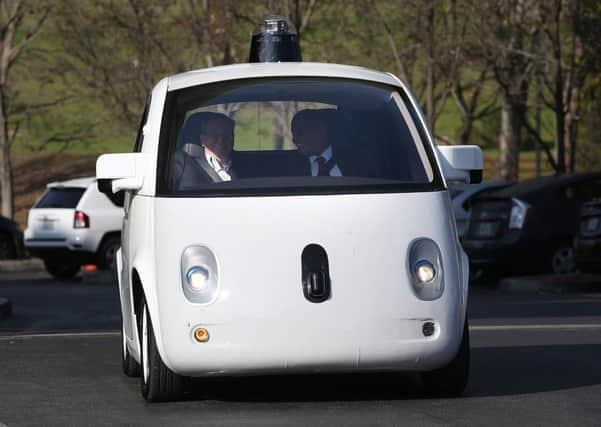Caroline Jones Carrick: Driverless cars powered by the road are on the way


Fast forward and future teens will get all that freedom and more without having to lay a hand on the steering wheel thanks to driverless cars with onboard computers and sophisticated sensors acting as virtual chauffeurs.
That’s not the only way car-based transport will be different. Road safety will be dramatically better. Car ownership models will shift, blurring the lines between private, public and shared transport. Crucially, the environmental impact of cars, trucks and buses will be much lower. Road transport accounts for around 20 per cent of worldwide carbon emissions, and it’s time we drive that number down, so to speak.
Advertisement
Hide AdAdvertisement
Hide AdSo how is all of this good stuff going to happen? How are transport professionals today working on creating such effortless, efficient and eco-friendly mobility for future generations?
Ushering in more sustainable transport isn’t just about making the cars better; it’s about making infrastructure better too. Roads can be designed with driverless cars in mind and to help put far more electric vehicles in the mix.
TEV Project is developing a highway that will power electric vehicles as they drive, as well as provide an environment that makes driverless cars operate with maximum efficiency and safety.
Electric cars will drive on TEV’s specially constructed, dedicated lanes under full automatic control. With the computer in the driver’s seat, vehicles can move at high speeds and be grouped closely together, making TEV a high bandwidth version of a highway.
Grouping cars together reduces air resistance. We’re also looking to optimise road surfaces in terms of rolling resistance. With an energy efficient design, overall energy consumption per mile will be as low as possible. With electric vehicles charging as they travel, we will eradicate range issues with existing batteries and make electric vehicles more practical.
We’ve recently announced a partnership with Newcastle University. Volker Pickert, professor of power electronics and head of the Electrical Power Research Group, has joined our team to oversee the development of TEV technology.
Global investment exceeded 2.2 billion dollars last year on creating and developing electric vehicles. A recent study predicted huge reductions in car volumes by 2030 through car sharing. The speed of change is astonishing. Scotland is a great place to be spearheading new road design given our tradition of transport innovation. This is, after all, the country that gave the world horsepower as a unit of measurement – thanks James Watt.
Caroline Jones Carrick is director of the TEV Project.